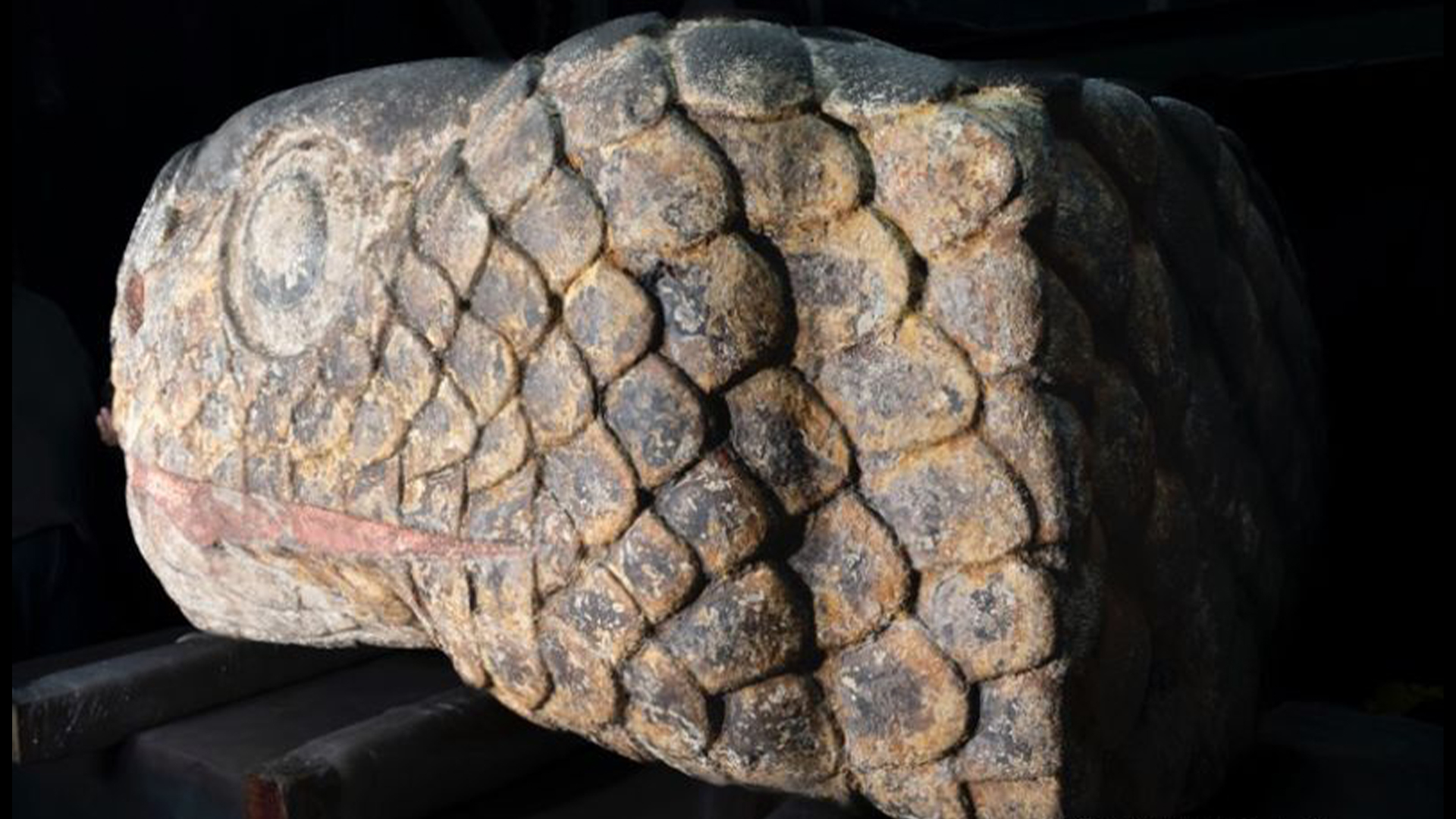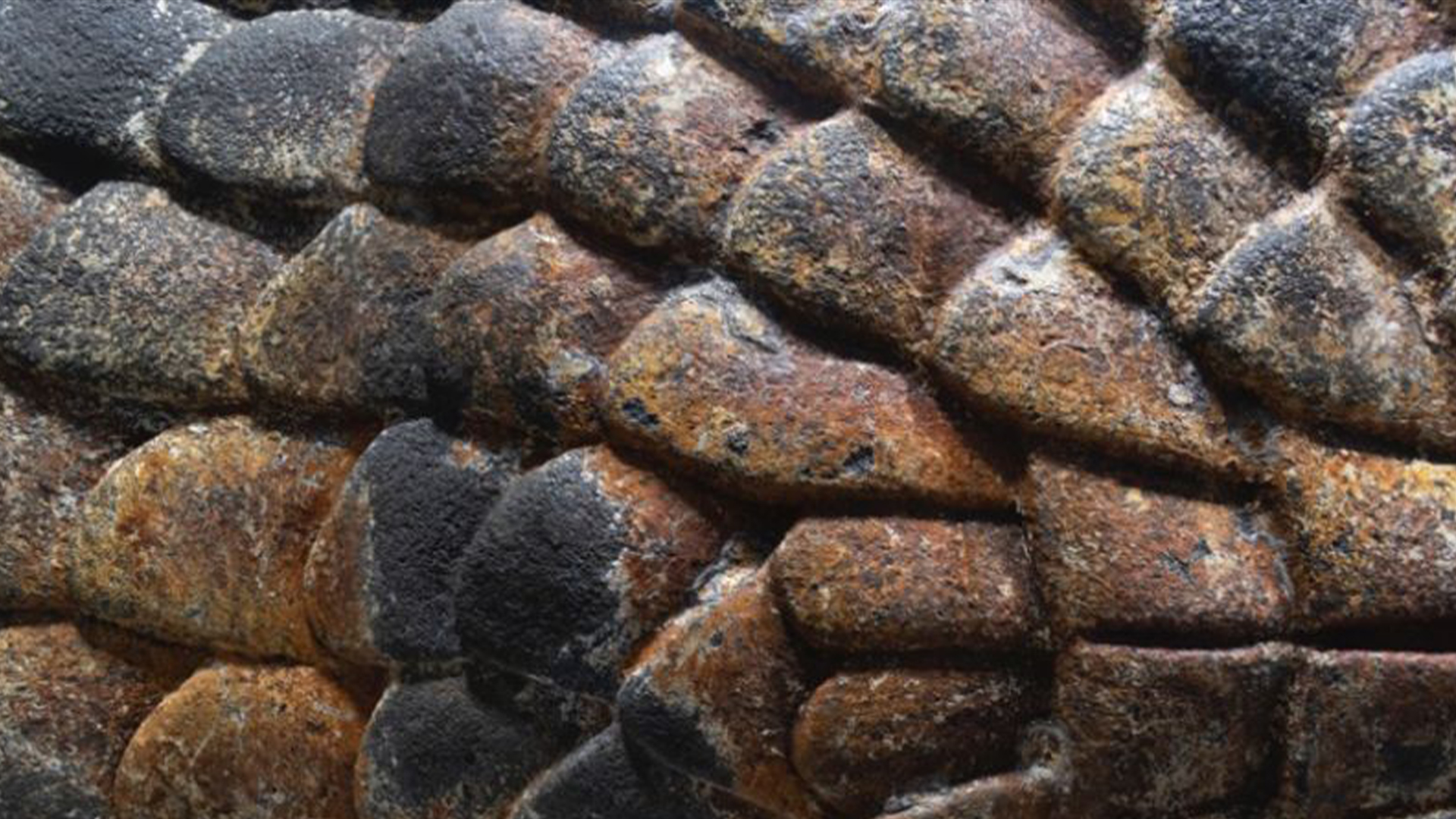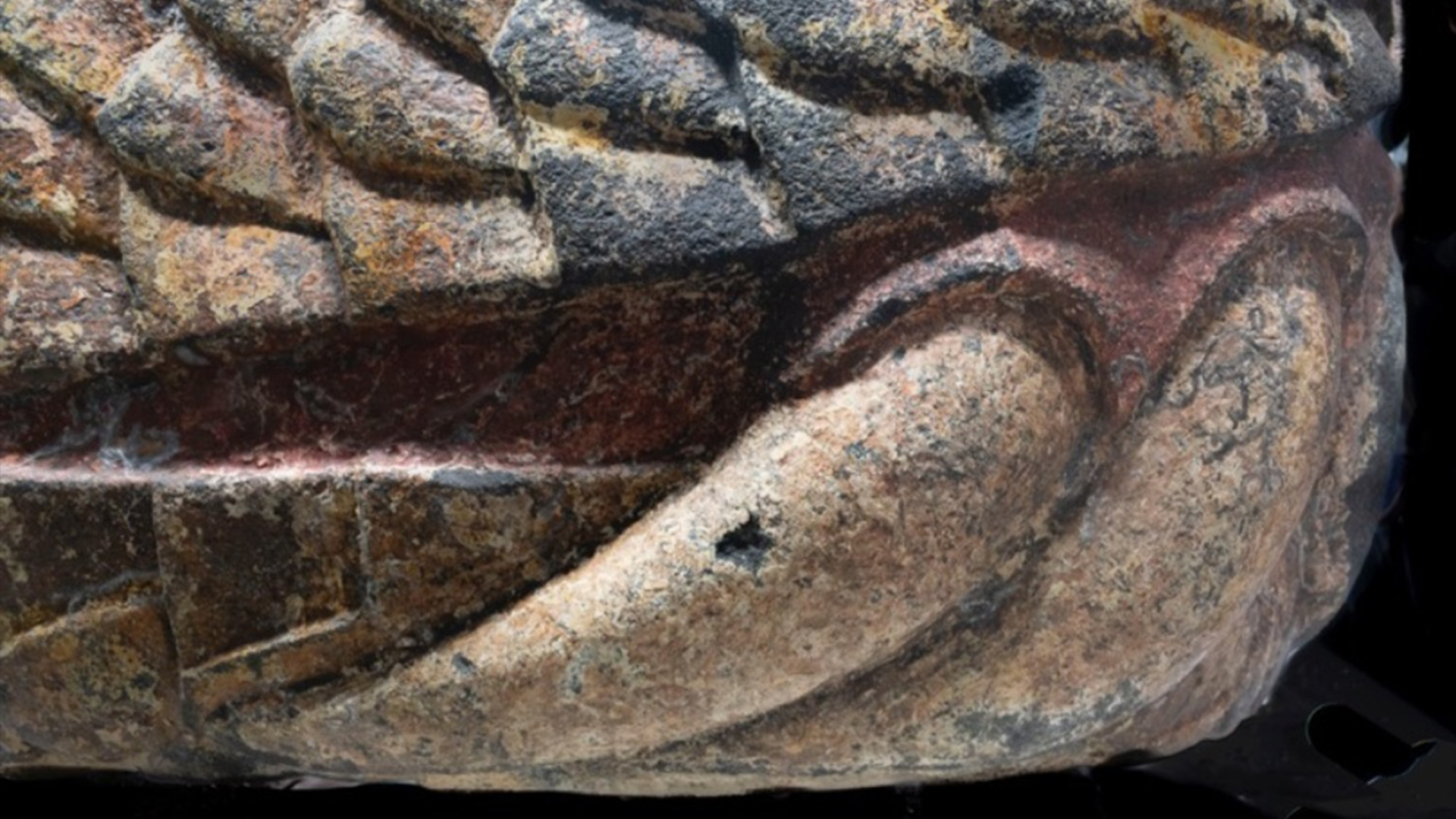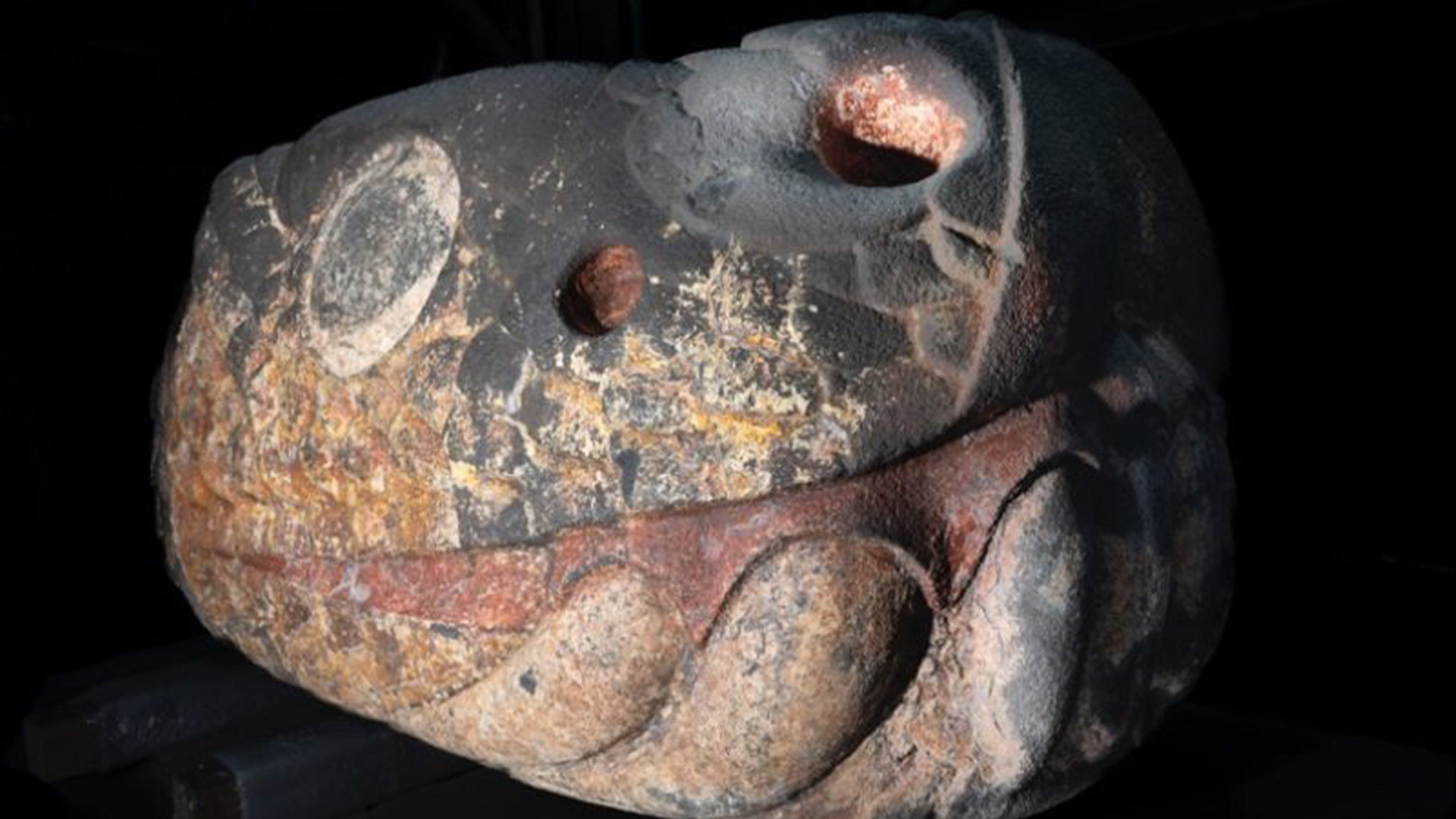Earthquake reveals giant Aztec snakehead beneath Mexico City university
Researchers are conserving a rare snakehead from the Aztecs that still retains its painted colors from hundreds of years ago.

An earthquake last year revealed a big surprise beneath a law school in modern-day Mexico City: a giant, colorful snakehead from the Aztec Empire.
The snakehead dates back more than 500 years, to when the Aztecs controlled the area, which at the time was part of the flourishing capital of Tenochtitlan. The sculpture was discovered after a magnitude-7.6 earthquake struck Mexico City on Sept. 19, 2022; the seismic event caused damage and changes in the topography, revealing the snakehead beneath a building that was part of a law school at the National Autonomous University of Mexico, Mexico's National Institute of Anthropology and History (INAH) said in a Spanish-language statement.
The Aztecs built temples and pyramids and worshipped a number of deities, including Quetzalcoatl, who was often depicted as a snake. However, it's unclear if this sculpture depicts him, the archaeologists said.
The sculpted snake is 5.9 feet (1.8 meters) long, 2.8 feet (0.85 m) wide and 3.3 feet (1 m) high, and it weighs about 1.3 tons (1.2 metric tons), the INAH said. Several colors — including red, blue, black and white — are preserved on the sculpture.

Color was preserved on about 80% of the sculpture's surface. To keep it preserved, an INAH team lifted the snakehead out of the ground with a crane and constructed a humidity chamber around the sculpture. This chamber allows the sculpture to lose humidity gradually, with its color being preserved, María Barajas Rocha, a conservationist with the INAH who worked extensively on the sculpture, said in the statement.
While other snakehead sculptures have been found at Tenochtitlan, this one is particularly important for its preserved colors, said Erika Robles Cortés, an archaeologist with the INAH.
Sign up for the Live Science daily newsletter now
Get the world’s most fascinating discoveries delivered straight to your inbox.

"Thanks to the context in which this piece was discovered, but above all, thanks to the stupendous intervention of the restorers-conservators led by Maria Barajas, it has been possible to stabilize the colors for its preservation in almost all the sculpture, which is extremely important, because the colors have helped us to conceive pre-Hispanic art from another perspective," Robles Cortés told Live Science in an email.
The sculpture's "sheer size is impressive, as well as its artistry," but the survival of the colors is remarkable, said Frances Berdan, a professor emeritus of anthropology at California State University, San Bernardino who was not involved with the excavation. "The survival of black, white, red, yellow, and blue paints is particularly interesting — one gains a good image of the visual impact of such sculptures as they were arrayed about the city center," Berdan told Live Science in an email.

In addition to its preserved colors, the snakehead's size is notable, said Bertrand Lobjois, an associate professor of humanities at the University of Monterrey in Mexico who is not involved in the excavation. The "first time I saw this serpent head, I was dazzled by its dimensions," he said in an email.
Lobjois also praised the conservation work that allowed the colors to survive, noting that "the conservation process allows us to appreciate the naturalistic approach of figuration" the Aztec artists used.
This work is ongoing and will continue at the site into next year.

Owen Jarus is a regular contributor to Live Science who writes about archaeology and humans' past. He has also written for The Independent (UK), The Canadian Press (CP) and The Associated Press (AP), among others. Owen has a bachelor of arts degree from the University of Toronto and a journalism degree from Ryerson University.









